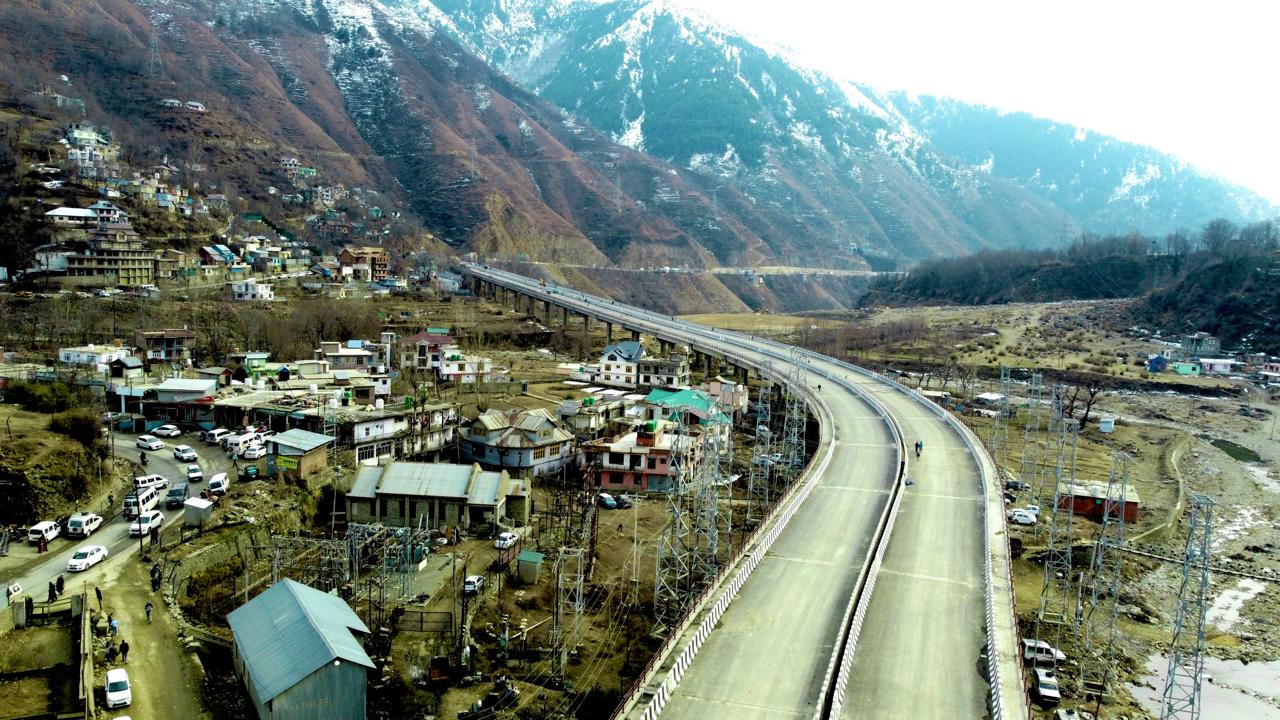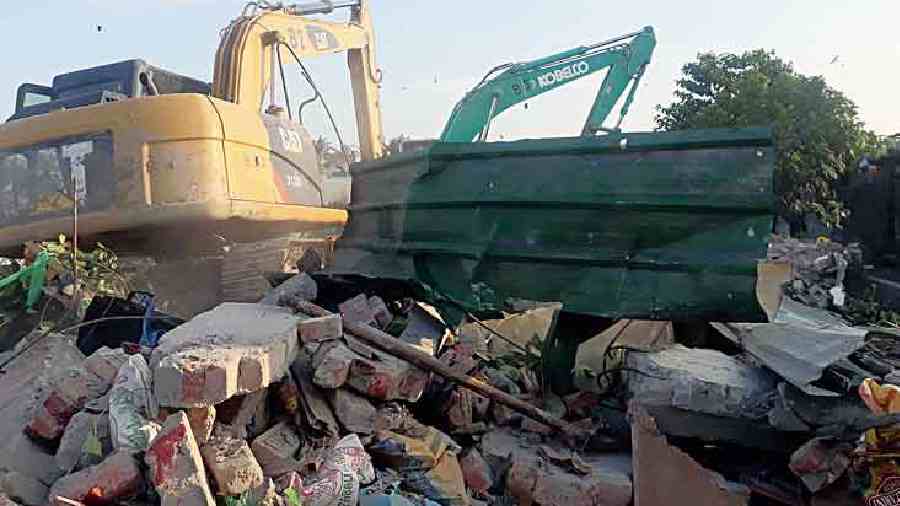A Landmark Moment for Jammu & Kashmir’s Infrastructure
Srinagar | 24 June 2025
In a historic move set to redefine connectivity in the Himalayan region, the Government of India has greenlit 19 major road and tunnel projects in Jammu & Kashmir, worth an estimated ₹10,637 crore. The decision marks a decisive shift in the Union Territory’s developmental trajectory, promising not just improved mobility but also transformative economic, strategic, and social benefits.
This substantial investment aims to develop 296 kilometers of critical roads and tunnels, which will connect remote areas, reduce isolation of border communities, and bring year-round accessibility to places long cut off during harsh winters.
Whether it’s the majestic slopes of Gulmarg, the border hamlets of Karnah, or the sacred routes of pilgrimage tourism, these infrastructural upgrades are poised to unlock new opportunities in tourism, trade, military logistics, and regional integration.
Let’s delve deeper into the major projects, their strategic value, and how this initiative can act as a cornerstone for Jammu & Kashmir’s brighter future.
Peer Ki Gali Tunnel: Reviving the Mughal Road’s Lost Potential
Estimated Cost: ₹3,830 crore
Length: ~6.5 km (proposed)
Keyphrase Use: Peer Ki Gali Tunnel
The Game-Changer for South-North Kashmir Connectivity
Once a royal route used by Mughal emperors to traverse the Pir Panjal range, the Mughal Road has long held symbolic and practical importance. However, its utility has been hampered by seasonal closures due to snowfall—particularly around the Peer Ki Gali stretch.
The Peer Ki Gali Tunnel project seeks to eliminate this barrier by making the Mughal Road an all-weather highway, connecting Shopian in south Kashmir with Poonch in the Pir Panjal region.
Strategic and Economic Impact
-
Alternative to Jammu-Srinagar Highway: Reduces dependence on the often-blocked NH-44
-
Boost to Apple Trade: Shopian’s apple growers get quicker access to markets in Rajouri and Poonch
-
Disaster Resilience: Provides emergency redundancy in case of NH closures
-
Tourism Circuit: Opens up unexplored trails and Mughal heritage sites
This project alone could redefine inter-regional commerce and resilience in Kashmir, offering a lifeline during crises and a new canvas for economic activity year-round.
Sadhana Tunnel: Opening the Gateway to Karnah
Estimated Cost: ₹3,330 crore
Keyphrase Use: Sadhana Tunnel
Year-Round Lifeline for LoC Villages
Nestled in the far northwestern corner of Kupwara, Karnah Valley remains cut off from the rest of Kashmir during winter months due to heavy snow on the Sadhana Pass. The new Sadhana Tunnel will provide round-the-year connectivity to these border villages, ensuring consistent access to healthcare, education, and markets.
Strategic and Humanitarian Relevance
-
LoC Security Enhancement: Improves troop mobility and border preparedness
-
Civilian Integration: Ends the seasonal isolation of thousands of residents
-
Tourism Potential: Karnah’s pristine alpine beauty could rival Gulmarg with the right access
-
Emergency Services: Easier evacuation, medical aid, and disaster response
This project reflects not just military foresight but also a deeply humanitarian vision of equitable development for even the most remote citizens.
Zaznar-Shopian Section (NH-701A): Paving a New Path Across the Valley
Estimated Cost: ₹852 crore
Project Focus: New highway alignment
Connecting Zaznar to Shopian, this stretch along NH-701A further strengthens the north-south corridor, easing movement between central and southern Kashmir.
It will particularly benefit agricultural logistics, reduce commute times, and decongest existing arterial roads—especially during peak harvest and tourist seasons.
Lal Chowk to Parimpora Flyover: Srinagar Gets Its Urban Mobility Upgrade
Estimated Cost: ₹700 crore
Keyphrase Use: Srinagar flyover project
From Traffic Chaos to Smooth Commutes
The congested Lal Chowk to Parimpora stretch in Srinagar, infamous for traffic snarls, will now see a 4-lane elevated corridor that aims to revolutionize urban mobility in the summer capital.
Urban Planning Meets Sustainability
-
Reduced Emissions: Less idling time means cleaner air
-
Boost to Local Economy: Easier access to central business districts
-
Smart City Integration: Complements Srinagar’s Smart City goals
-
Pedestrian Safety: Dedicated pathways, better traffic segregation
It’s not just a flyover—it’s a statement of modernization.
Trehgam-Chamkote Road (NH-701): Strategic Backbone in Kupwara
Estimated Cost: ₹966 crore
Stretch: Trehgam to Chamkote
Located near Kupwara, a critical region in North Kashmir bordering Pakistan, this route will see major upgrades under NH-701. The new road will facilitate both civilian traffic and security deployment, offering a smoother corridor for locals and military units stationed near the Line of Control (LoC).
Magam Flyover (Narbal-Gulmarg Route): Tourism on the Fast Lane
Estimated Cost: ₹445 crore
Keyphrase Use: Magam Flyover
This project aims to ease traffic between Narbal and Gulmarg, a vital tourist artery that sees thousands of visitors—domestic and international—especially in winter.
Benefits include:
-
Reduced Congestion at Magam Market
-
Faster Tourist Access to Gulmarg
-
Better Goods Movement for hotels, ski resorts, and adventure operators
-
Boost for Local Businesses along the route
Qazigund Bypass: Gateway to Kashmir Gets a Safety Boost
Estimated Cost: ₹95 crore
This small yet crucial bypass will streamline traffic at Qazigund, the entry point to the Kashmir Valley via the Banihal tunnel. It will reduce bottlenecks, enhance safety, and ensure seamless transition for trucks, buses, and pilgrims alike.
Bridge Over Rambiara River (Shopian): Linking Communities
Estimated Cost: ₹71 crore
Keyphrase Use: Rambiara bridge project
This project envisions a modern bridge over the Rambiara River in Shopian, replacing an old and unreliable structure. It will directly benefit surrounding villages by cutting commute time and improving safety during rains and floods.
Collective Impact: Strategic, Civilian, and Economic Benefits
Strategic Significance
These projects drastically improve border logistics, enabling rapid military deployment across sensitive LoC sectors like Kupwara, Rajouri, and Poonch. All-weather access allows for uninterrupted patrols, emergency evacuation, and disaster relief—even during Kashmir’s harshest snowfalls.
Civilian Empowerment
-
Reduces Isolation of remote areas
-
Better access to hospitals, schools, and markets
-
Enhanced road safety, especially for students and pilgrims
-
Job Creation through construction, tourism, and logistics
Tourism and Trade
-
Opens up new circuits like Shopian-Karnah and Zaznar-Poonch
-
Improves access to Gulmarg, Peer Ki Gali, and unexplored valleys
-
Boosts craft exports, especially Kashmiri apples, walnuts, and saffron
-
Attracts investment in eco-tourism and rural stays
A Vision for Sustainable Development in the Himalayas
While infrastructural expansion often raises environmental concerns, officials assure that all projects will undergo stringent ecological assessments, ensuring that the fragile Himalayan ecology is preserved.
Technologies such as pre-fab tunnels, slope stabilization, and wildlife corridors are expected to be deployed to mitigate adverse effects.
Public Response: Hope, Excitement, and a Cautious Optimism
Local Voices
Residents in Karnah, Shopian, and Kupwara have welcomed the announcements with hope and gratitude. “We’ve waited decades to feel connected to the rest of Kashmir. Now, maybe our children can go to college even during winters,” said a Shopian local.
Industry Reaction
Tourism operators, traders, and logistics firms see this as a watershed moment, expecting exponential growth in the next 3–5 years.
Bottom-Line: A New Dawn for Jammu & Kashmir’s Connectivity
These 19 mega projects are not merely stretches of asphalt and concrete—they are pathways to opportunity, bridges to inclusion, and symbols of a united India investing in its most remote frontiers.
The ₹10,637 crore investment reaffirms the Centre’s commitment to infrastructure-led transformation, providing Jammu & Kashmir not only with roads but with routes to progress, prosperity, and peace.
The valley, once known for its disconnected hamlets and inaccessible hills, is now stepping confidently into the future—one kilometer at a time.



